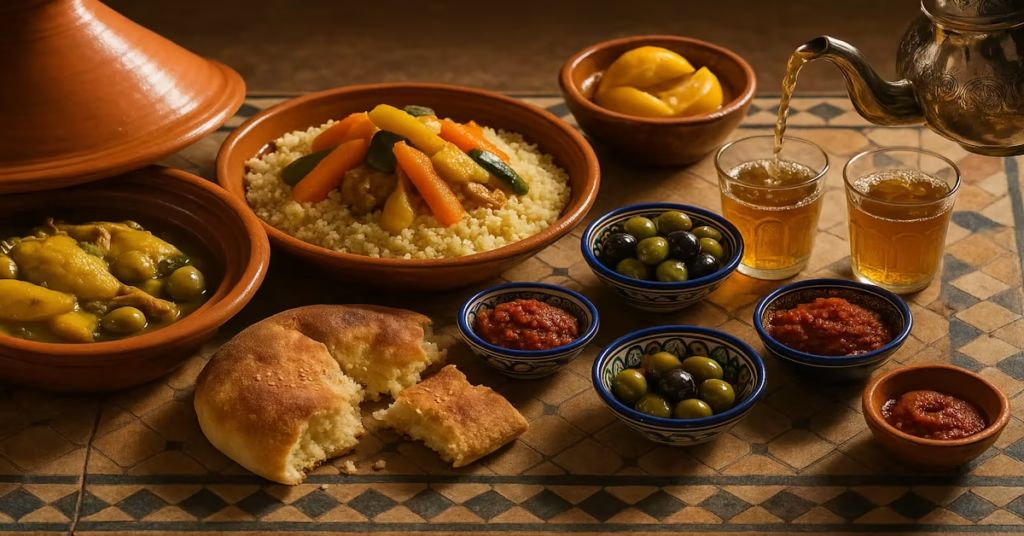Introduction: Why Traditional Moroccan Food Matters
There’s a reason Traditional Moroccan food is famous across the world—it’s a warm, vibrant explosion of flavor and color that feels like a hug for your soul. It is food that includes a cuisine full of history and culture of Morocco, full of rich spices and their aromatic aroma along with their lovingly cooked meal. Family dinners are about much more than food when families gathered around it; they are time of complete happiness, generosity, and marked respect.
Honestly? Something about it. It is not only food, it is the feeling. That contact of the spices, that filling of a room with aromas… it is living. It is food that does not simply satisfy your stomach, it narrates a story of its own. That is what the magic we are plunging into.
We are going to immerse ourselves in its well-known recipes, its ancient recipes, and the gorgeous metaphor they give. You may even be amazed to know how food can bring people together in a strong manner. And in the end you would also find out how, just like the necessary spices that make these dishes memorable, our information technology can give your business that much-needed impetus and flavor.
The Heart of Traditional Moroccan Food
Moroccan cuisine does not fall on accident. The balance to each and every recipe is thoughtful. It is partly the place of sweet and savory hugging, where fresh, herby vegetables break the richness of low-cooked meat. It could be a few berries pressed against salty olives–the two things clashing with each other on your tongue and perfectly agreeable.
It’s this beautiful, intentional mix of flavors—that’s where the soul of traditional Moroccan food truly lives. What it creates in its outcome is an incredibly bold but ever-light taste. Herself is a concert of history and nearness, of conversation between past and present, with each spoonful.
Spices That Tell Stories
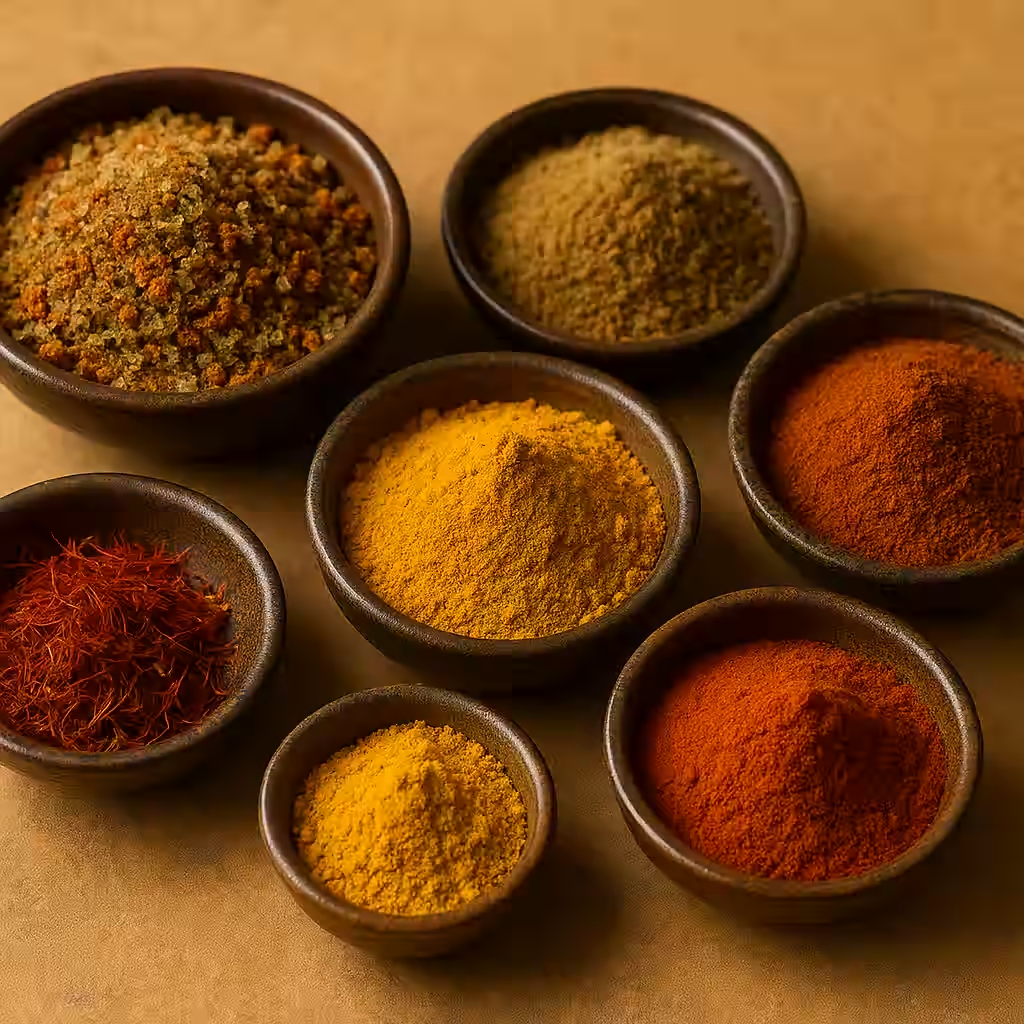
Spices are the secret language of Moroccan kitchens. They do not just season food; they bring meaning.
- Cumin is earthy and warm.
- Cinnamon adds gentle sweetness.
- Paprika gives a smoky kick.
- Turmeric adds bright yellow color.
- Saffron is rare and golden, used for special meals.
They are frequently blended into mixtures such as Ras el Hanout that may contain as many as 30 spices. Imagine that—30 flavors dancing together in one dish!
Have you ever smelled something and been transported back in time? In Morocco, spices work like a time machine. One whiff can remind you of a family dinner from years ago.
Famous Dishes of Morocco
Couscous: More Than Just a Side
Couscous is often called the national dish of Morocco. It looks simple—tiny grains of semolina steamed until fluffy. But you see, it’s so much more than that—it’s food that carries a whole story. Traditionally, it is served on Fridays after prayer, bringing families together.
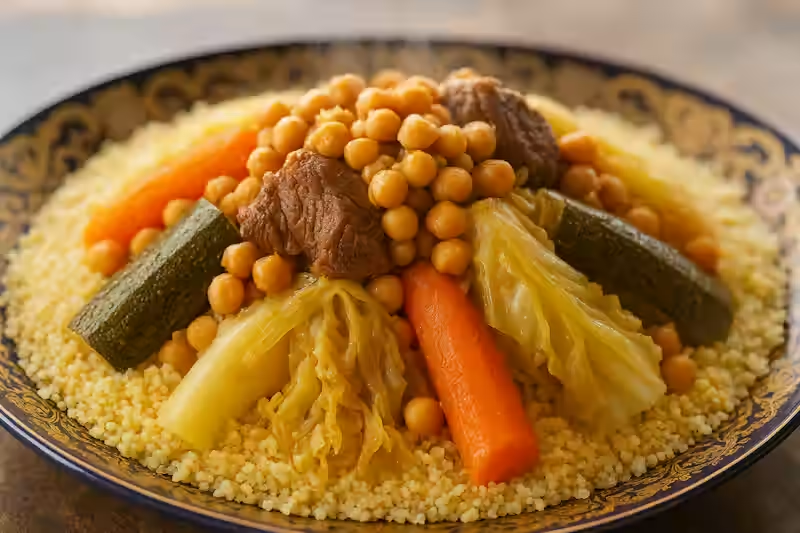
A large dish of couscous may be topped with lamb, chicken, or beef. Vegetables like carrots, zucchini, and turnips are added. A sauce made from broth and spices gives it warmth. People eat from the same big dish, using spoons or bread. This share-making is what is magnetic.
Tagine: A Pot and a Dish
The word “tagine” can mean two things. It is the clay pot with a cone-shaped lid, and it is the dish cooked inside. What makes this pot so clever is its shape—it just hugs the steam inside, letting everything cook until it’s unbelievably tender and swimming in its own juices.
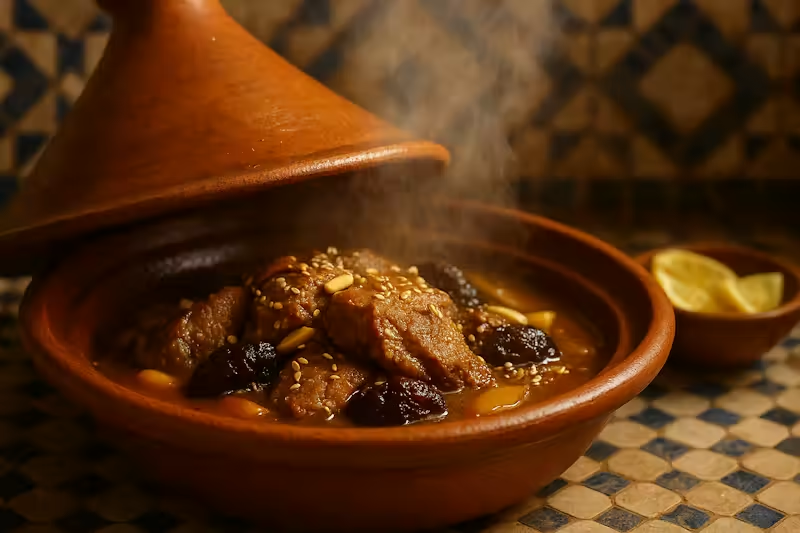
A tagine can hold lamb with prunes, chicken with preserved lemon, or fish with tomatoes and olives. The slow heat allows flavors to mix slowly, like a conversation between ingredients. Waiting for it is part of the joy. After hours of cooking, the first bite feels like a reward.
Harira: Soup With Meaning
Harira is a heart warming soup. It is prepared using tomatoes, lentils, chickpeas and in some cases, meat. It is spiced with ginger, cinnamon and herbs.
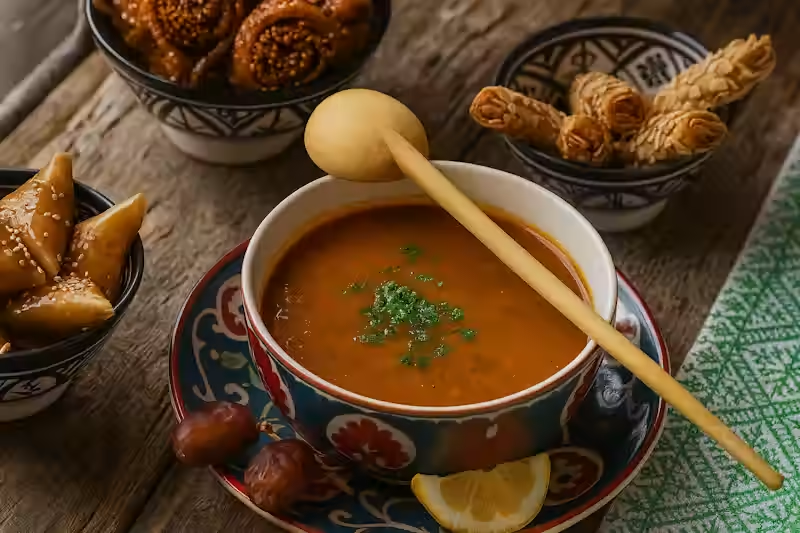
Harira isn’t just a meal—it’s a feeling. It’s comfort, tradition, and warmth in a bowl. It is served within the first moments of the day during Ramadan. It is also soft yet nourishing and therefore families are spending their fast on it. Savoring harira is a comforter in a bowl.
Street Food You Should Try
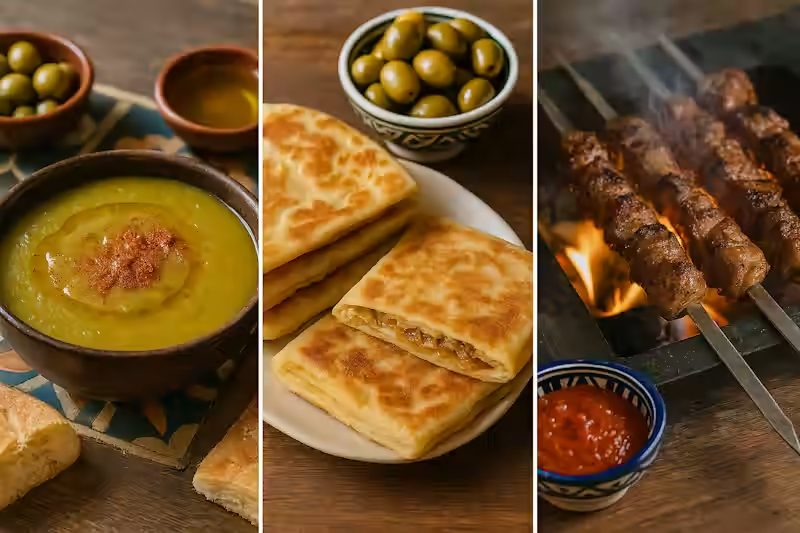
Traditional Moroccan food is not always about long hours of cooking. The streets of Morocco are full of quick meals that are simple but tasty.
- B’ssara is a fava bean thick soup that is usually paired with bread and olive oil..
- Msemen is a square, layered flatbread, sometimes eaten with honey or filled with onions.
- Brochettes are skewers of meat grilled on open flames, often eaten with bread instead of plates.
Moroccan cuisine can tomorrow be fast and casual and still rich in flavor as demonstrated by the street food.
The Role of Bread and Tea
Bread is in Morocco more than a side. It is a tool. It is used by people to scoop food, dip into the sauces and put bites in the mouth. All families have bread on the table and a lot of bake over. Bread is ever-present, in a soft rounded form or a flat and crispy one.
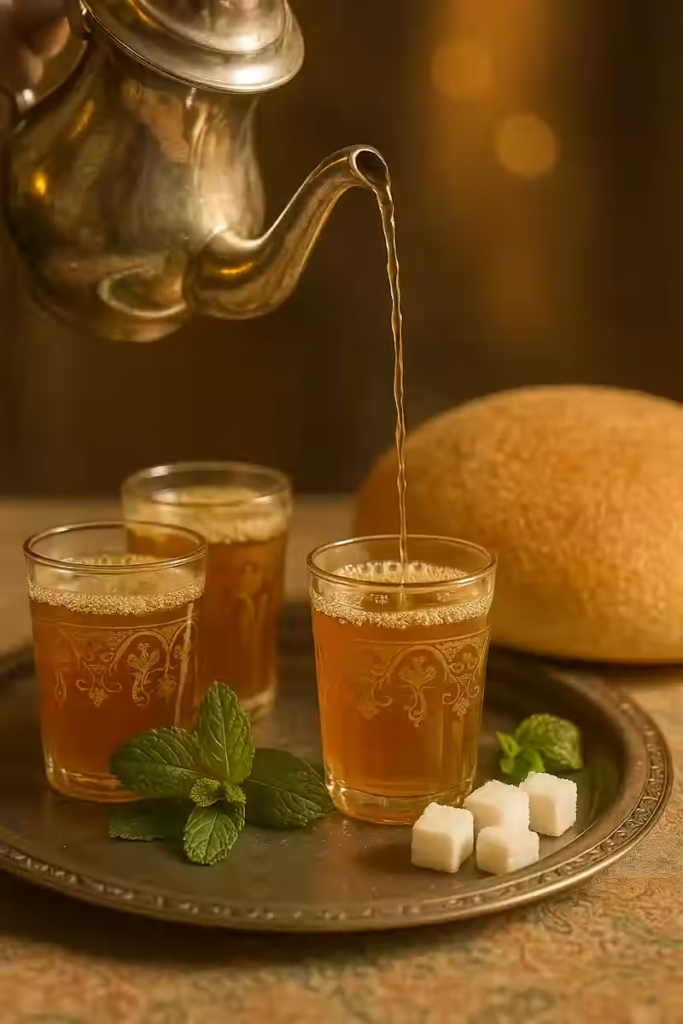
Then comes the famous mint tea. Fresh mint leaves are brewed with green tea and plenty of sugar. The tea is poured from a height into small glasses, creating foam at the top. This pouring is almost a performance. Tea is not just a drink—it is hospitality in liquid form. Serving tea is a way of saying, “You are welcome here.”
Cooking Methods That Shape Flavor
Traditional Moroccan food is shaped by how it is cooked. Patience is often the key.
- Steaming makes couscous light and fluffy.
- Slow simmering gives tagines their rich, deep taste.
- Grilling adds smoky flavor to meats and fish.
- Baking fills the home with the smell of fresh bread.
Cooking is not rushed. Time is an ingredient. The longer the food cooks, the better it tastes.
Think about it: do quick meals always satisfy you? Moroccan cooking shows that waiting for flavor is worth it.
Why Traditional Moroccan Food Feels Special
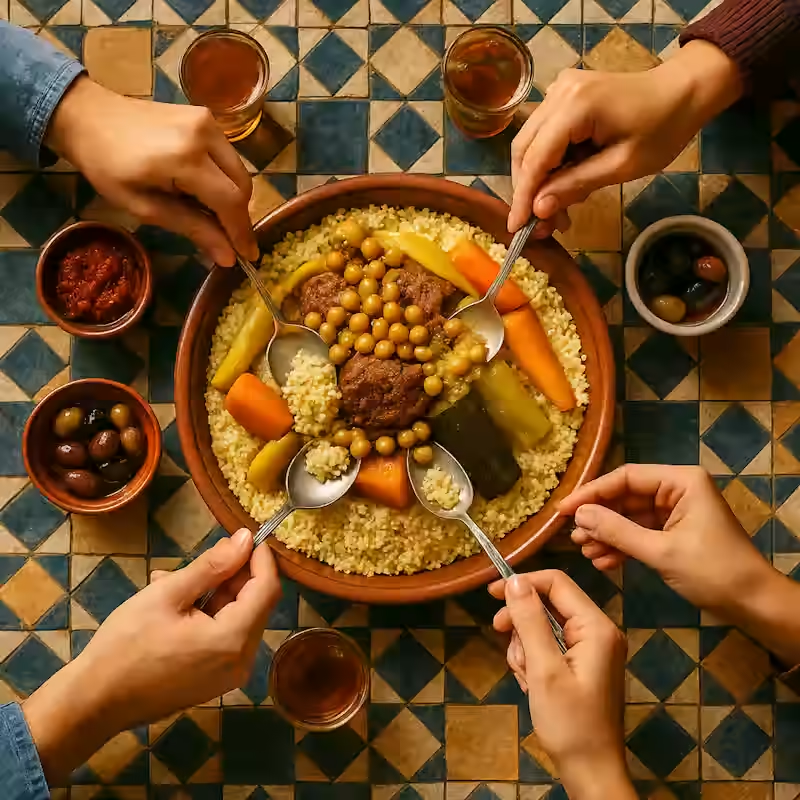
Moroccan food? It’s heart first, flavor second. A guest is always welcomed with open arms and a place at the table. We share one dish, one bread, one experience—because here, hospitality isn’t a gesture… it’s who we are
Traditional Moroccan cooking moves with the calendar: special plates for weddings, recipes saved for religious holidays. Each dish signals a moment that matters.
That is why Moroccan cuisine has survived for centuries without losing its soul. It is flexible but still tied to family and culture.
Moroccan Food and Modern Life
You may wonder: can such traditional cooking fit into modern, busy life? The answer is yes. Some dishes take time, but others are quick. Street food, bread, and soups can be prepared in less than an hour. Even couscous is now sold pre-steamed, ready in minutes.
Restaurants around the world serve Moroccan food in modern ways. Chefs come up with the fusion preparations where they combine the old tastes with the new concepts. But the essential of the cuisine is still alike. It is taste issue, family and culture.
Ingredients That Travel the World
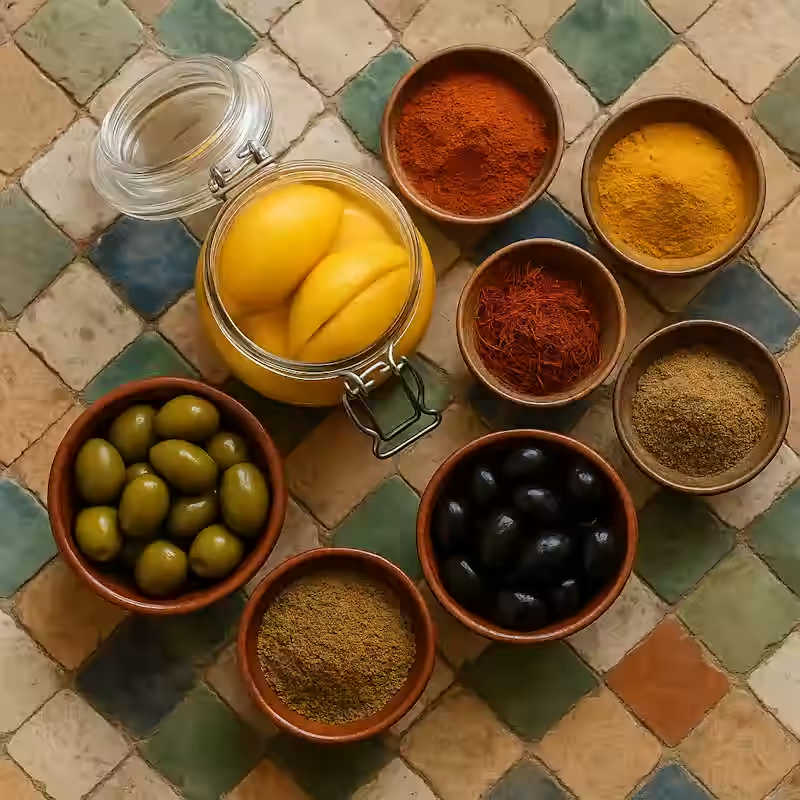
Many ingredients from traditional Moroccan food are now used globally. Europe and America eat couscous. In fine restaurants they included preserved lemons. Our spices such as cumin and paprika are very common in most kitchens.
This illustrates that Moroccan food is local and at the same time worldwide. It has crossed regions not losing its identity.
Eating Habits and Social Meaning
Meals in Morocco are often eaten from a shared plate. It’s this very tradition that weaves people together, bite by shared bite. People eat slowly, talk, and enjoy each other’s company. There is no rush.
Even the order of dishes has meaning. Salads and bread may start the meal. Then comes the main dish, often a tagine or couscous. Finally, fruits or sweets finish the table. Each step of the meal is part of a story.
Isn’t it interesting how food tells us who we are? In Morocco, food is culture on a plate.
Health and Nutrition in Moroccan Cooking
Traditional Moroccan food is not just tasty—it is healthy. Meals often center on vegetables, legumes, whole grains, and olive oil. Meat is present but balanced with plants. Spices not only flavor food but also support health.
For example:
- Ginger helps digestion.
- Turmeric is known for its anti-inflammatory power.
- Garlic supports the heart.
So you get the best of both worlds—incredible flavor that’s also genuinely good for you.
Travel and Food Tourism
Many tourists visit Morocco for its food. Walking through a market is like stepping into a painting. Bright spices, fresh vegetables, and sizzling grills call out to you.
Food tours take visitors into local homes, where they learn to cook couscous or roll msemen. These experiences show that traditional Moroccan food is not just eaten—it is lived.
Food tourism has become a key part of Morocco’s economy. And it is easy to see why. Who would not want to eat tagine under the stars in Marrakech?
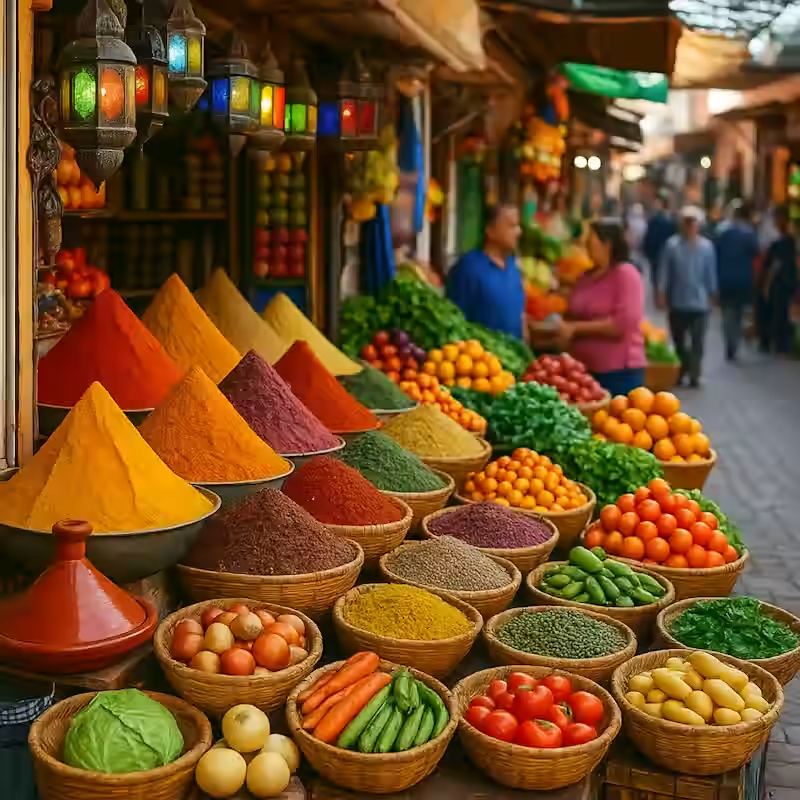
Traditional Moroccan Food and Family Life
In Moroccan homes, cooking is often a family activity. Recipes are passed from grandparents to parents to children. Sons and daughters can only learn through watching and helping. Identity involves these skills.
Special meals mark big life events. A wedding may include lamb dishes and sweets. A birth may be celebrated with milk and dates. Food narrates a family and life story.
Final Thoughts: Food Meets Technology
Traditional Moroccan food—think tagine, couscous, and mint tea—is rich, colorful, and full of life. Each bite holds history and emotion, connecting people and creating joy.
Now to technology. Just as Moroccan cuisine layers spices for balance, your business needs a tailored mix of IT services. Our team offers:
- Secure cloud solutions for safe storage
- Fast and reliable software for daily work
- Data protection and backup to keep you safe
- Smart automation to save time
We think it should be IT easy and encouraging, the hot bowl of harira after a hard day. Allow us to facilitate your IT solutions to allow you to concentrate on growth.
👉 Contact us today and let’s make your business stronger—just like spices make traditional Moroccan food unforgettable.

